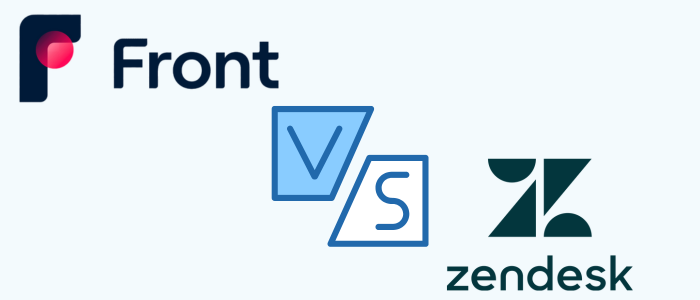What is Front?
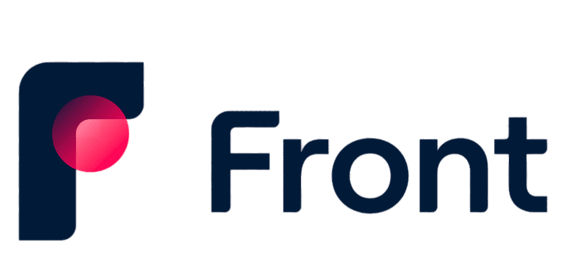
Front App functions as a versatile communication hub, akin to a help desk system, offering your team a wide range of communication options. It consolidates your emails, chats, SMS, and social media messages into a unified inbox for convenience. Beyond its user-friendly interface, the tool boasts an array of automation features and an analytics module to enhance your workflow. Moreover, it seamlessly integrates with various third-party solutions, ensuring optimal performance and adaptability.
[Related article: 10 Top Help Desk Software for Small Business in 2024]
Here are also powerful CRM options for sales activities to consider:
-Mar-27-2024-11-59-56-4325-AM.png)
monday sales CRM
Let monday sales CRM do the grunt work while your team stays focused on high-level tasks, such as creative projects, business strategy, and relationship building.
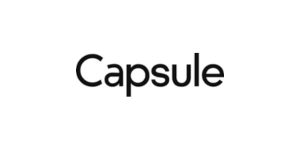
Capsule
Capsule is a cloud-based CRM platform that helps businesses build relationships with customers. It enables users to store contacts, track sales opportunities, automate workflows and manage projects.
-Mar-27-2024-12-03-07-6108-PM.png)
Zoho
It is a web-based email marketing management service for small and medium businesses. It automates the entire marketing process - from managing your email marketing campaign to maintaining mailing lists.
-Mar-27-2024-12-03-10-0664-PM.png)
Pipedrive
Pipedrive CRM is a user-friendly platform that is effortless to master. It is the creative web designer's secret weapon in the world of Customer Relationship Management.
Key Features of Front
Front App boasts three core features that significantly enhance your team's efficiency and effectiveness: the shared inbox, the internal visibility system, and the multichannel communication module.
Shared Inbox
The shared inbox feature is a centralized place for collecting data from various channels, including SMS systems, Live Chat solutions, and social media platforms. This comprehensive inbox conveniently gathers all requests, questions, and suggestions in one place, labeling and tagging incoming messages based on their source. With an understanding of context, the shared inbox ensures that support requests are not overlooked, providing a streamlined approach to managing diverse communication channels.
Internal Visibility System
The Internal Visibility System takes team collaboration to the next level by offering enhanced visibility within the workspace. It unifies customer information, eliminating the need for teams to search for scattered data. This system goes beyond the inbox by allowing integration with CRM, external inboxes, and backends through its API. Suitable for both small and large companies, it is designed to scale effectively, ensuring that relevant information is easily accessible and manageable.
Multichannel Communication
The multichannel communication feature enables seamless communication across various platforms. While not overloaded with extravagant options, it stands out for its exceptional speed and reliability. Unlike other similar features, Front App's multichannel communication ensures a smooth experience without delays or disruptions, making it feel like a native platform chat.
These three features collectively empower your team to work efficiently, especially during peak periods, providing a comprehensive and agile solution for managing communication and collaboration tasks.
What is Zendesk?
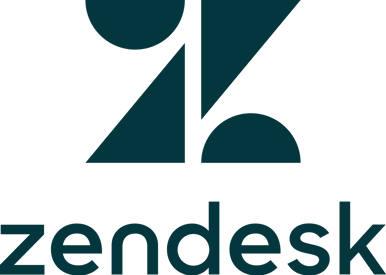
While Zendesk may need no introduction, let's provide a brief overview. Zendesk is a robust help desk tool, including fundamental features alongside exclusive capabilities. With a substantial following among companies, it has earned widespread acclaim as the go-to solution for automation and comprehensive multi-brand support requirements. Recognized for its power and versatility, Zendesk has become one of the best help desk tools over the years.
Key Features of Zendesk
Zendesk's popularity is well-founded, considering its highly polished and widely embraced features. Let's delve into the standout functions that make Zendesk a preferred choice:
Customization & Personalization
Zendesk is designed with customization at its core. From the outset, the tool facilitates not only color changes but also offers themes, diverse layouts, and stylization options. The level of customization is modular, giving users the flexibility to differentiate the look of their knowledge base from their main page. Third-party themes can also be seamlessly integrated, adding an extra layer of personalization.
Native Integration
One of Zendesk's impressive features is its effortless integration with other Zendesk products. Whether you require an advanced chat system or a dedicated call center solution, Zendesk simplifies the process. Users can achieve seamless integration without the need for intricate API configurations or coding. Utilizing help desk credentials with other services is all it takes to enhance support capabilities.
Performance Dashboards
Zendesk excels with its performance dashboards, offering a robust tool for tracking a wide array of metrics. These dashboards provide a versatile platform for monitoring performance metrics, income, and customer satisfaction. The comprehensive insights gained from the dashboard tool add an extra layer of visibility, enabling meticulous issue tracking and informed decision-making.
These features contribute to Zendesk's status as a top-tier help desk tool, explaining the proliferation of alternatives seeking to match its popularity and functionality.
[Related article: 15 Best Zendesk Alternatives 2024 (Free & Paid Zendesk Replacement)]
Comparison Chart of Zendesk and Front
| Criteria |
||
| Best for |
|
|
| Overall Rating (on Capterra) |
4.6/5 |
4.4/5 |
| Easy of Use (on Capterra) |
4.5/5 |
4.3/5 |
| Customer Service (on Capterra) |
4.4/5 |
4.3/5 |
| Pricing |
|
|
| Free Trial |
✅ |
✅ |
Main Differences Between Front vs Zendesk
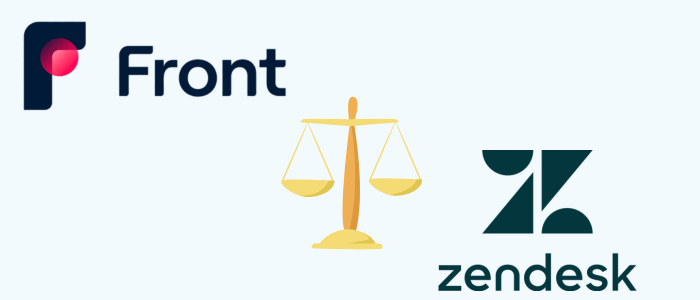
Front and Zendesk diverge in their primary focus and strategies for customer support. While Zendesk is renowned as a helpdesk solution that consolidates customer support inquiries from diverse communication channels, Front places emphasis on collaborative email and shared inboxes, fostering teamwork in handling incoming communications.
Our analysis in comparing help desk ticketing systems reveals that both platforms offer a comprehensive set of tools aimed at enhancing and simplifying customer communication.
Zendesk stands out as a robust help desk software, excelling in omnichannel support, ticketing systems, and automation for customer service operations. Its features, including ticket management and a self-service portal, are designed to ensure well-organized and efficient customer service. Additionally, Zendesk extends its capabilities with solutions like Zendesk Sell, catering to basic sales and CRM business needs.
On the flip side, Front is dedicated to elevating email into a powerful collaboration tool. It enables multiple team members to collaborate on a single email thread, ensuring prompt and coordinated responses.
In essence, both solutions excel in enhancing customer satisfaction and streamlining support processes, but with different core focuses – Zendesk with its comprehensive help desk features and Front with its emphasis on collaborative email management.
Try Starter Suite for free
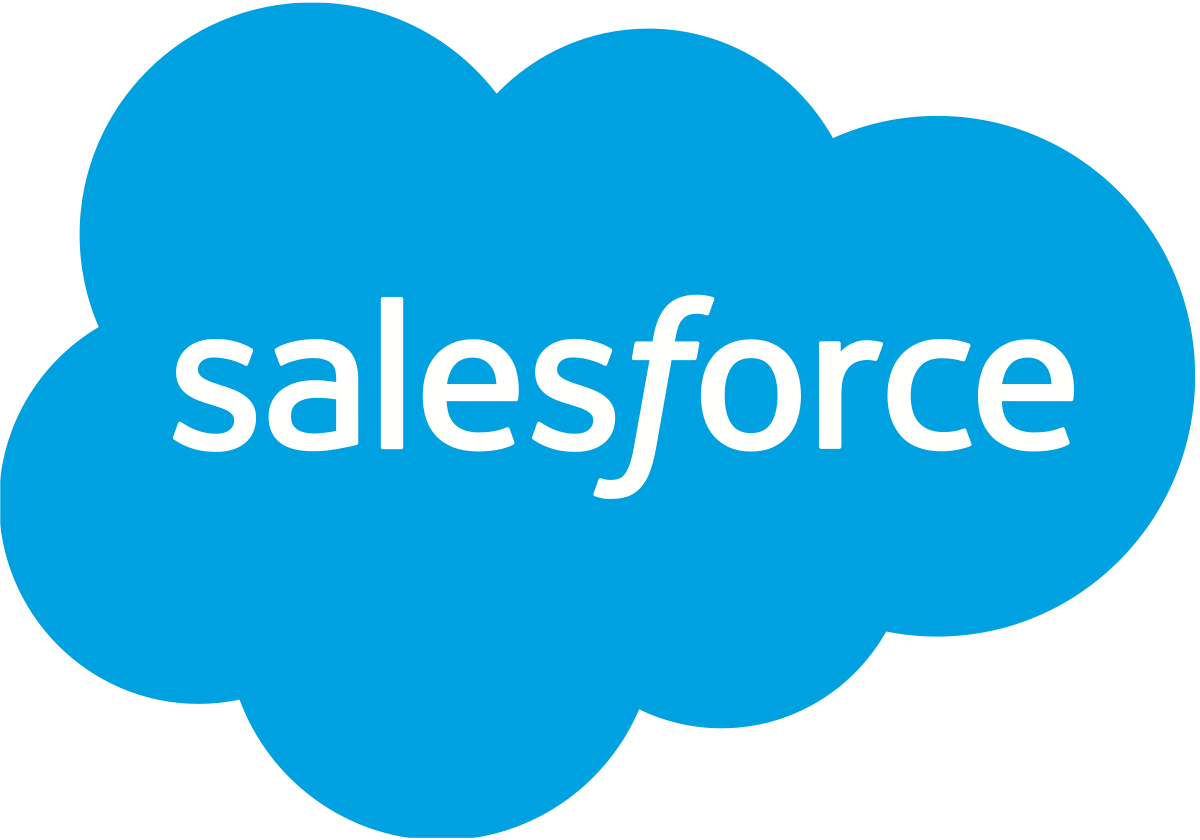
4.5
Similarities Between Front and Zendesk
Front and Zendesk, while distinct in certain aspects, share several similarities that make them both reputable choices for customer support and collaboration. Here are some key similarities between Front and Zendesk:
- Both Front and Zendesk function as comprehensive help desk solutions, offering tools and features to manage customer support requests efficiently.
- Both platforms are designed with user-friendly interfaces, making them accessible and intuitive for users. This facilitates quick onboarding and ease of use.
- Front and Zendesk offer extensive integration capabilities. They support various third-party integrations and provide APIs, allowing users to connect the platforms with other tools and systems.
- Both platforms allow for customization, enabling users to tailor the appearance and functionalities to suit their specific needs. This includes themes, layouts, and other customizable elements.
- Both Front and Zendesk provide API access, allowing users to create custom solutions or integrate the platforms with other tools to enhance functionality.
- Front and Zendesk prioritize customer support and provide resources such as help centers, community forums, and additional materials for onboarding and training.
While they may have differences in certain features and pricing structures, the shared similarities highlight the strengths of Front and Zendesk in delivering effective customer support and collaboration solutions.
[Related article: Salesforce vs Zendesk — Which one is better for customer service?]
Front vs. Zendesk: User Interface
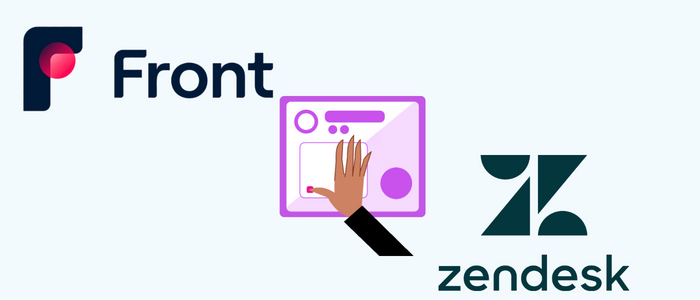
Front
If you're familiar with other email apps, you'll find it quite intuitive. On the left, you'll see all your inboxes and messages, while the main area is dedicated to displaying the message content. The top right corner includes your profile icon, notification bells, and the online status of other users.
The UI is neat and uncluttered, lacking a background image (although you can add one if you prefer). Icons are clear and easily distinguishable. Navigating between tabs and menus is swift, except when handling an overwhelming number of emails simultaneously, which might cause a slight slowdown.
Zendesk
Zendesk's User Interface (UI) is really praiseworthy. It not only boasts simplicity and ease of navigation but is also highly customizable, making it stand out in terms of user experience. Even in its default state, the UI is sleek and operates with impressive speed.
Here's a breakdown of the UI elements:
- Sidebar: Positioned on the left side, the sidebar presents a comprehensive array of options, ensuring that all necessary functions are easily accessible. This organized layout contributes to seamless navigation, allowing users to effortlessly explore and utilize the features they need.
- Context-Aware Search Tool: Placed at the top, Zendesk features a context-aware search tool. This intelligent search functionality ensures that users can quickly find the information they need, enhancing efficiency and reducing the time spent on locating specific details.
- Main Body: The central area of the UI is dedicated to communication windows. This space serves as the primary hub for managing interactions and tickets, providing a focused and clutter-free environment for effective communication.
- Right Side: The right side features a comprehensive display of all customer-related information. This layout enhances the user's ability to gather key details about the customer, contributing to a holistic understanding of their needs and history.
Overall, Zendesk's UI is a well-crafted blend of functionality and aesthetics. Whether you appreciate its default simplicity or choose to dive into customization options, the UI remains intuitive and user-friendly. Its speed, coupled with thoughtful placement of elements, ensures a seamless experience for users, reaffirming Zendesk's reputation as a leader in help desk tools.
Zendesk vs Front App: Ease of Use
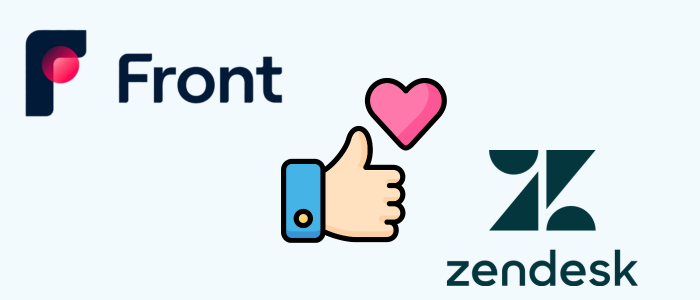
Both Zendesk and Front prioritize ease of use in their design, ensuring a smooth and accessible experience for users.
Zendesk
Zendesk is known for its emphasis on a seamless user experience. The platform is quick to set up, and its design is user-friendly. Even newcomers can swiftly familiarize themselves with its tools, thanks to a minimal learning curve. The interface is designed for ease of use, particularly benefiting regular users who find the platform intuitive and straightforward.
[Related article: Freshdesk vs. Zendesk: Which one should you choose in 2024]
Front
Front is also designed for ease of use, allowing users to get started quickly. Its intuitive platform is especially beneficial for teams migrating from traditional email systems. The user-friendly interface consolidates conversations, teammates, and apps in one location, promoting smoother team collaboration. Front is praised for its simplicity in onboarding new team members. Features like drag-and-drop for organizing customer conversations, shared visibility into responsibilities, and the ability to comment directly on emails contribute to making collaboration easier without the need for extensive training.
In summary, both Zendesk and Front prioritize a user-friendly experience. Zendesk is known for its quick setup and minimal learning curve, while Front offers an intuitive platform that simplifies collaboration, particularly for teams transitioning from traditional email systems. The choice between them would depend on specific user preferences and the nature of the team's workflow.
Zendesk vs. Front App: Pricing
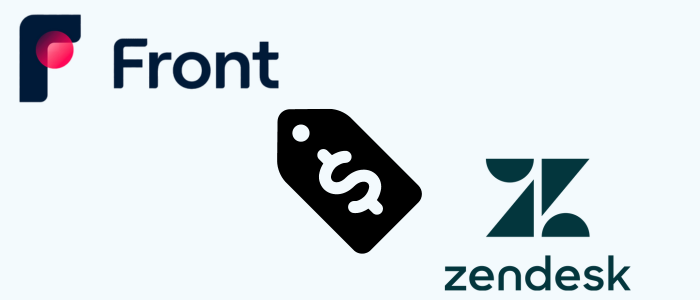
| Front |
Zendesk |
|
|
[Related article: 18 Best Low Cost CRM in 2024 - Make Your Choice!]
Zendesk
Zendesk provides a diverse range of pricing options. The basic plans—Team, Professional, and Enterprise—are priced at $19, $55, and $115 per user per month when billed annually. For Zendesk Suite, which includes Teams, Growth, and Professional tiers, the pricing is $55, $89, and $115 per user per month when billed annually. Zendesk also offers a Suite Enterprise plan, and for detailed pricing, direct contact with the company is required. Although there's a free trial available, there's no ongoing free plan. Startups, however, can benefit from Zendesk at no cost for the first six months.
Front
Front tailors its plans to various business needs. The Starter plan, suitable for smaller teams, is priced at $19 per seat per month. For larger teams, the Growth and Scale plans come at $59 and $99 per seat per month when billed annually. Front's Premier plan, featuring premium features, is available at $229 per seat per month. Like Zendesk, Front provides a free trial, but there's no permanent free plan.
In summary, both Zendesk and Front offer a range of pricing plans, allowing businesses to choose based on their specific needs and team size. Zendesk's diverse plans cater to various requirements, and Front, with its tailored plans, ensures flexibility for different business scales.
Zendesk vs Front: Customer Support
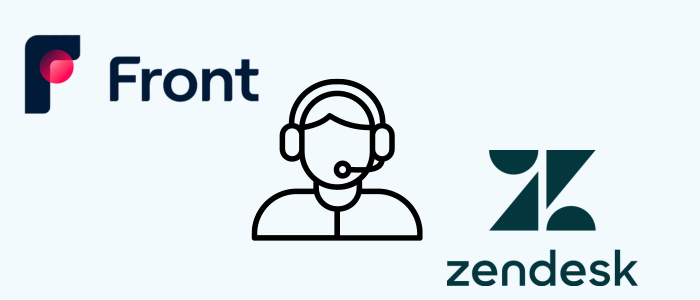
When it comes to customer support and knowledge base offerings, Zendesk and Front present distinct features:
Zendesk
Every Zendesk plan includes digital support during regular business hours. Users gain access to a dedicated help center, a community forum, and resources for onboarding and training. For those seeking more hands-on assistance, premium support options are available as add-ons. These options include around-the-clock proactive support and a specialized tool called Zendesk Assist.
Front
Front ensures email support for all users, with additional support features for subscribers to higher-tier plans. Higher-tier plans provide access to video and live chat support. Premium subscribers enjoy personalized onboarding, a dedicated account team, and early access to pre-release and beta features. Front boasts a comprehensive help center filled with resources guiding users on software functionalities. The platform also offers an active community forum, a regularly updated blog, guides, webinars, and a unique Front Academy. Through the academy, users can pursue a Front Administrator Certification.
In summary, both Zendesk and Front offer robust customer support, but their approaches and additional offerings vary. Zendesk provides digital support as a standard, with premium options available, while Front offers email support to all users and expands its offerings, including personalized onboarding and a unique certification program, for higher-tier subscribers.
Integration Capabilities: Front or Zendesk?
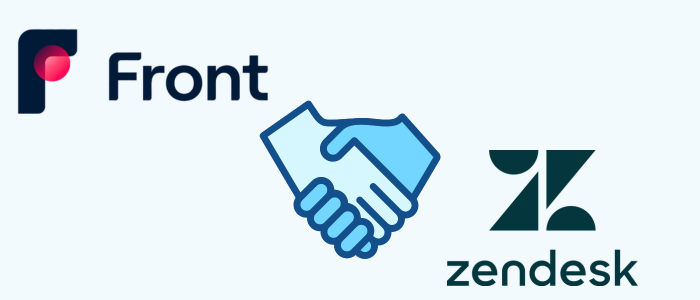
Zendesk
Zendesk provides a robust integration ecosystem through its Marketplace. Native integrations with popular apps like Mailchimp, Google Apps, and Salesforce are readily available. For tools not directly listed, platforms like Zapier can bridge the gap, expanding the range of possible integrations. Zendesk's API offers the flexibility to create custom solutions tailored to specific needs. Users can even showcase their creations on the Zendesk Marketplace, contributing to a collaborative environment.
Front
Front boasts over 100 integrations, offering a comprehensive range of connections. Its open API further enhances flexibility, allowing users to customize workflows to align with unique business requirements. Whether utilizing Salesforce, HubSpot, Asana, Jira, or other tools, Front ensures seamless access to data.
In conclusion, both Zendesk and Front excel in providing a wide array of integrations to enhance their platforms' capabilities. Zendesk's Marketplace and API support native and custom integrations, while Front's extensive integration library and open API cater to diverse business needs, enabling users to create tailored workflows and access data seamlessly.
Which Helpdesk Tool Is Better: Zendesk or Front?
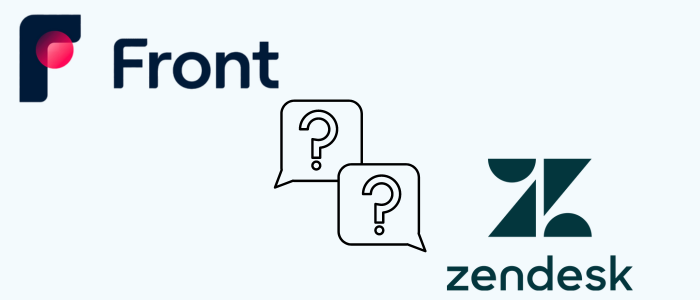
In conclusion, Front and Zendesk are robust customer support and collaboration platforms, sharing similarities such as user-friendly interfaces, customization options, integration capabilities, and API access.
Distinctive features include Zendesk's comprehensive help desk solutions and omnichannel support, while Front excels in transforming email into a collaborative tool. The choice depends on organizational needs and specific feature priorities. With free trials available, businesses can explore and determine which platform aligns best with their requirements.
